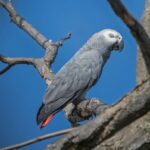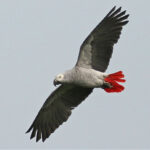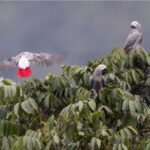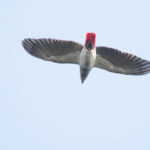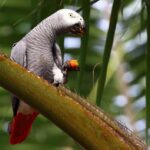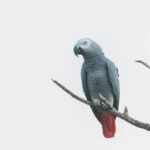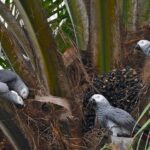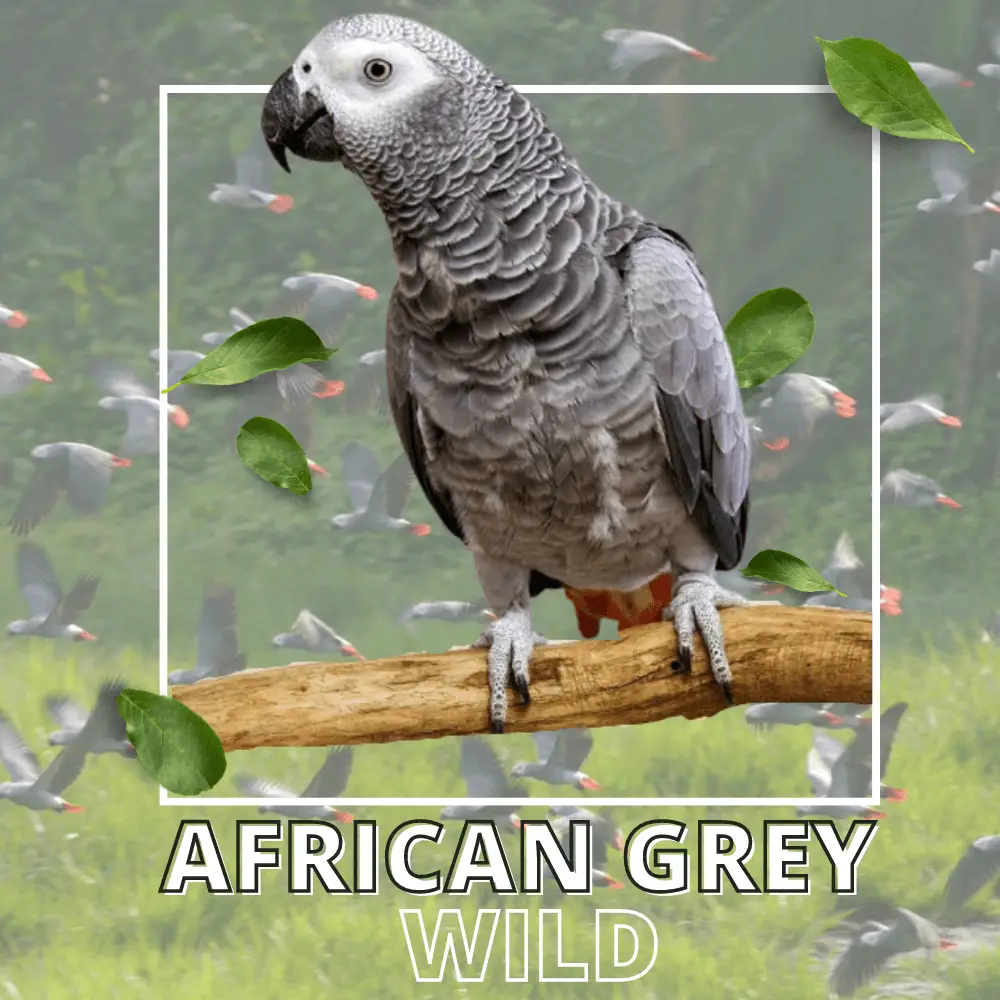
African grey wild: P. e. Erithacus and P. e. timneh are considered conspecific by CITES (Convention on International Trade in Endangered Species of Wild Fauna and Flora) and as two separate species by BirdLife International. The conservation status of each taxon is covered separately below.
P. e. timneh (Timneh Parrot): ENDANGERED. CITES I. Overall population estimated at 100,000–500,000 mature individuals, of which Ivory Coast and Liberia are thought to hold largest populations, calculated to number 54,000–130,000 and 50,000–100,000 individuals, respectively, with a total population estimate of ~120,000–259,000 individuals in 1992.
Timneh Parrot Nest Video
SOURCE: IUCN Save Our Species
However, numbers appear to have fallen even in the heart of its range; for example, some 32 km of line-transect surveys and 38 h of dedicated surveys within d’Azagny National Park and other suitable areas in Ivory Coast in 2013 failed to encounter the species.
Other estimated national populations are as follows: Sierra Leone (11,000–18,000), Guinea (5,000–10,000), and Guinea-Bissau (100–1,000), with any population in south Mali, presumed to be insignificant (it has been strongly doubted that the species remains there).
In Guinea, trappers interviewed in the early 2000s reported declines of at least an order of magnitude. Appears to have disappeared completely from around Mt Nimba, Liberia; surveys in 2008–2011 in east Nimba Nature Reserve and the nearby forest did not find the species, with no evidence that the species has been present recently, and it was surprisingly scarce in the area as early as the 1970s.
An estimated 1,400 birds were smuggled from Ivory Coast annually in 1981–1984, over 99% being timneh. In Gola Forest of Sierra Leone, it persists but never seems to have been particularly abundant, with groups rarely reaching double figures; elsewhere in the country, there has been a large decline since the 1930s and 1940s and it is now confined to the mangrove belt and forests of eastern Sierra Leone.
Population declines noted throughout the range, with trapping for the wild bird trade constantly implicated in these, although habitat loss also has significant impacts.
The subspecies has been heavily traded: during 1994–2003, > 359,000 wild-caught individuals (both timneh and Erithacus, but the majority being Erithacus) and these species are among the most popular avian pets in Europe, the United States, and the Middle East due to its longevity and unparalleled ability to mimic human speech and other sounds.
While there has been some domestic demand within a range of states, most impacts seem to be due to international trade, probably owing to the high value of this species.
In addition to those birds smuggled from Ivory Coast (see above), in 2009 Guinea exported 720 timneh, despite a quota of zero, and legal trade as monitored by CITES may represent only a proportion of the total numbers taken from the wild.
CITES imposed a 2-year ban from January 2007 on exports of timneh from 4 West African countries, and the importation of wild-caught birds into the European Union was prohibited in 2007, leading to a fall in exports of both species, but the number of exportations rose once again in 2008/09.
The species (considered by CITES as conspecific with P. e. Erithacus) was moved to Appendix I in 2016, thus banning international trade. It has been estimated that ~77% of the forest cover in the Upper Guinea Endemic Bird Area had been lost by the late 1980s, and regional forest loss has continued since that date at a high rate.
In Guinea and Guinea-Bissau, preferred species of nesting trees are also preferred timber species. In the light of new information, it was uplisted by BirdLife International from Vulnerable to Endangered in 2016.
P. e. Erithacus (Gray Parrot): ENDANGERED. CITES I. Locally abundant with a very large range, hence with a high world population. Believed to have undergone rapid population decline over the last 50 years, although quantitative data on changes in abundance is lacking.
African Grey Parrots in the Wild
https://www.youtube.com/watch?v=QnnOx178Z64
SOURCE: World Parrot Trust
Preliminary calculations based on forest cover and country-level population estimates from the 1990s to 2001 suggest a global population of 560,000–12,700,000 individuals, with declines noted in Burundi, Cameroon, Ghana, Kenya, Nigeria, Rwanda, Togo (were probably extirpated), Uganda, and parts of Congo and the Democratic Republic of the Congo.
Between 1982 and 2001, > 657,000 wild-caught individuals of P. e. Erithacus and P. e. timneh (the vast majority being Erithacus) entered international trade, the second-most heavily traded parrot in the world in the period 1982–1989 after Fischer’s Lovebird (Agapornis Fischer).
Considering estimates for pre-export mortality, the number of birds taken from the wild during this period might have numbered > one million, with Cameroon accounting for 48% of exports in 1990–1996 and estimates that ~90% of trapped birds died before reaching Douala airport suggest that, although annual quotas remained at 12,000 individuals, > 100,000 birds were captured in Cameroon annually.
Similarly, in Ghana, chronic exploitation since at least the 1870s and, despite a ban in 1986, local populations that numbered many hundreds in 1940s to twos and threes today (e.g., in Bia National Park).
The total population in Ghana was estimated at 30,000–80,000 birds in 1992, but the country is calculated to have lost 90–99% of its population over the two decades since then.
More common throughout the forest zone south of 8° N in Ivory Coast, where the population is probably 10,000–25,000; likewise in many areas in the rest of the range, including Nigeria, Cameroon, Congo, Gabon, and Cabinda.
Several roosts in Gabon accommodate 5,000–6,000 birds nightly, and a roost in the north numbers 10,000. An abundant resident (10–100 seen or heard daily) in the two Dzanga reserves, Central African Republic. Around Kinshasa, former Zaire, large flocks (200) are now gone, possibly owing to trade, and the species is also diminishing around cities in the Congo.
In Uganda occurs in Budongo, Bugoma, Bwamba, and Mabira forest reserves, with recent estimates of 714 and 342 individuals, respectively, in the first- and last-named, plus Rwenzori and Kibale National Parks.
In Kenya, now absent from several forests were previously reported, and virtually now only known from Kakamega Forest, where although still locally common in the 1980s only 10 birds reportedly survived in the mid-1990s and probably even fewer than this in December 2007.
Up to 10,000 wild-caught birds from the Democratic Republic of the Congo are apparently imported into South Africa each year. Logging and farming are major causes of forest loss and degradation in Ghana, compounded by poor forest management, fire, and mining.
Habitat loss is undoubtedly also having significant impacts, but in addition, to capture for international trade, there is an active internal trade in live birds for pets and exhibition, and the species is also hunted in some areas as bushmeat and to supply heads, legs and tail feathers for use as a medicine or in black magic.
A feral population of this species is present in Cotonou, Benin, presumably originating from escapees. Range-wide population declines are now thought to have been so severe that the global conservation status was revised from Vulnerable to Endangered.
In order to address the threat from the cagebird trade, P. e. Erithacus (considered conspecific with P. e. timneh by CITES) was moved to Appendix I in 2016, thus banning international trade.
African grey parrots: wild at heart
SOURCE: World Animal Protection
Demography and Populations
African grey wild picture
Exposure
In Cameron, the most common causes of nest failure were predation, nest desertion, and infiltration of rainwater; less frequent causes of failure included the occupation of nests by bees, natural tree fall, harvesting by humans, congestion of nests by lianas or adjacent vegetation, and chicks falling from nests.
Predation
Predation was the main cause of nest failure (47.4%) for 38 nests monitored in Cameroon; the main predators were the Palm-nut Vulture (Gypohierax angolensis) and other species of hawks (55%), followed by humans (27.8%), and squirrels (16.6%).
Direct Human Impacts
In 2003, a study near Lobeke National Park in southern Cameroon reported that an average of 630 Gray Parrots were captured per month over a 3-month period with an average of 537 birds captured inside the park alone; 80% of all birds captured were adults.





















